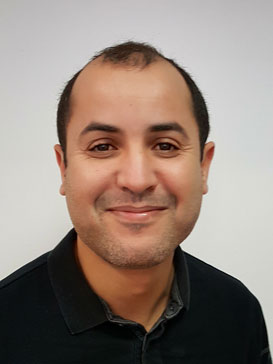← Retour vers le trombinoscope
 Technicien
Technicien Mail :
Tel : 03 22 82 74 76
Fax : 03 22 82 75 68
Je travaille au sein du laboratoire LG2A en tant que technicien pour la synthèse de substrats de départ et de certains intermédiaires, à partir de protocoles fournis par les différents acteurs de la recherche. Mon travail consiste également en la purification et la caractérisation des produits obtenus (RMN, IR, Ms...)
Comparative analysis of sulfated and sulfonated disaccharide analogs as TLR4 modulators and heparanase inhibitors |
Fragmentation of DMPC Membranes by a Wedge-Shaped Amphiphilic Cyclodextrin into Bicellar-like Aggregates |
Fast and Efficient Mechanosynthesis of Aldonamides by Aminolysis of Unprotected Sugar Lactones |
Synthesis of novel S- and O-disaccharide analogs of heparan sulfate for heparanase inhibition |
One-Pot Synthesis of Asymmetrically Difunctionalized Oligomaltosides by Cyclodextrin Ring Opening |
First step to the improvement of the blood brain barrier passage of atazanavir encapsulated in sustainable bioorganic vesicles |
Solvent- and catalyst-free transamidations of unprotected glycosyl carboxamides |
Uncommon Strong Inhibition of α-Glucosidase by Multivalent Glycoclusters built on Cyclodextrins Scaffolds |
Synthesis of multivalent S-glycosides analogs of a heparan sulfate sequence |
Biological impact of octyl D-glucopyranoside based surfactants |
Metal-free oxidative esterification of benzylated monosaccharides |